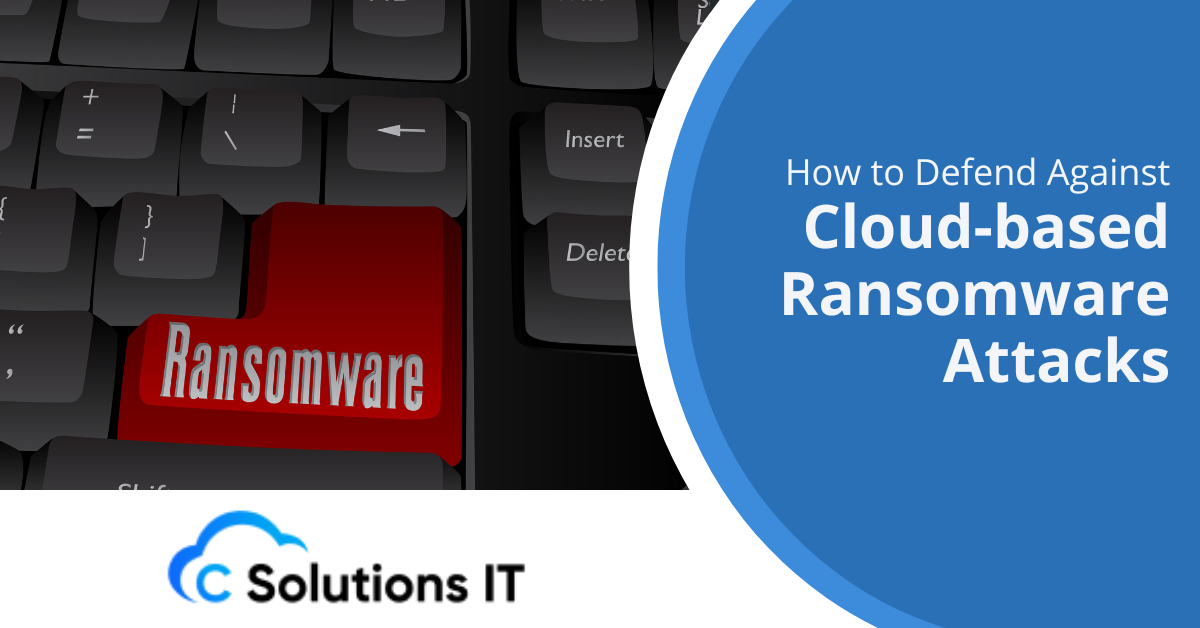How to Defend Against Cloud-based Ransomware Attacks

In today’s interconnected world, the cloud has become an integral part of business operations. While it offers numerous advantages such as scalability and flexibility, it also introduces new security challenges. One of the most pressing concerns is the rise of cloud-based ransomware attacks.
These attacks can be devastating, causing data breaches, financial losses, and reputational damage. In this comprehensive guide, we will explore the threat landscape of cloud-based ransomware attacks and provide actionable strategies to defend against them.
Understanding Cloud-based Ransomware Attacks
What is Cloud-based Ransomware?
Cloud-based ransomware is a malicious software that encrypts data stored in cloud environments, rendering it inaccessible to the victim. The attackers then demand a ransom in exchange for the decryption key. This form of cyberattack has gained prominence due to the increasing reliance on cloud services, making it a lucrative target for cybercriminals.
The Anatomy of a Cloud-based Ransomware Attack
- Infection: Attackers gain access to a cloud environment through various means, such as phishing emails, compromised credentials, or exploiting vulnerabilities in cloud infrastructure.
- Encryption: Once inside, they encrypt critical data using advanced encryption algorithms, making it unreadable without the decryption key.
- Ransom Demand: Attackers demand a ransom, often in cryptocurrency, in exchange for the decryption key. Paying the ransom is discouraged as it doesn’t guarantee data recovery and may fund further criminal activities.
- Data Extortion: In some cases, attackers may threaten to leak sensitive data if the ransom is not paid, adding another layer of complexity to the attack.
Building a Strong Defense Against Cloud-based Ransomware
To protect your organization from the growing threat of cloud-based ransomware attacks, you need a multi-faceted security strategy. Here are some key steps to defend against these attacks effectively:
1. Regularly Update and Patch Software
- Ensure all software and cloud services are up-to-date with the latest security patches.
- Regularly review and update security policies to adapt to evolving threats.
2. Implement Strong Access Controls
- Enforce the principle of least privilege (PoLP) to limit access to data and systems only to those who need it.
- Implement multi-factor authentication (MFA) to add an extra layer of security to user accounts.
3. Conduct Employee Training and Awareness
- Train employees to recognize phishing attempts and suspicious emails.
- Foster a culture of cybersecurity awareness and provide resources for reporting potential threats.
4. Backup and Disaster Recovery Plan
- Regularly backup data to secure, offline locations. Ensure backups are not directly accessible from the network.
- Develop and test a disaster recovery plan to quickly restore operations in case of an attack.
5. Employ Advanced Threat Detection
- Utilize advanced threat detection solutions that can identify and mitigate ransomware attacks in real-time.
- Implement machine learning and AI-driven tools to detect anomalies and behavioral patterns indicative of ransomware activity.
6. Encrypt Data at Rest and in Transit
- Encrypt sensitive data both at rest and in transit to ensure it remains protected even if attackers gain access.
- Use reputable encryption algorithms and key management practices to safeguard encryption keys.
7. Incident Response Plan
- Develop a comprehensive incident response plan that outlines the steps to take in the event of a ransomware attack.
- Ensure all stakeholders are aware of their roles and responsibilities during an incident.
8. Regularly Test and Update Security Measures
- Conduct penetration testing and vulnerability assessments to identify weaknesses in your security posture.
- Continuously update and refine security measures based on the evolving threat landscape.
The Role of Cloud Service Providers
Cloud service providers (CSPs) also play a crucial role in defending against cloud-based ransomware attacks. It’s essential to choose a CSP that prioritizes security and offers features such as:
- Data Encryption: Ensure your CSP encrypts data at rest and in transit.
- Security Monitoring: Utilize CSPs with robust security monitoring and alerting systems.
- Compliance and Certifications: Verify that your CSP complies with industry standards and has relevant certifications.
- Incident Response: Understand your CSP’s incident response capabilities and collaborate on security incidents.
Protect Yourself Today
Defending against cloud-based ransomware attacks requires a proactive and multi-layered approach. By implementing strong access controls, employee training, advanced threat detection, and a comprehensive incident response plan, organizations can significantly reduce their risk of falling victim to these devastating attacks.
At C Solutions IT, we are committed to helping businesses secure their cloud environments and protect against emerging threats like cloud-based ransomware attacks. If you need expert guidance and support in enhancing your cybersecurity defenses, please don’t hesitate to contact us. Together, we can safeguard your data and operations in the cloud.
